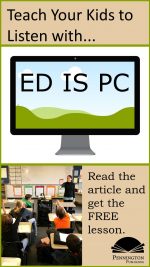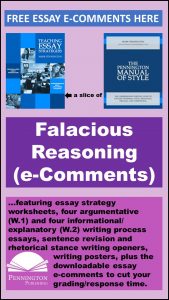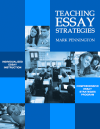How to Memorize Using the Catch Words (Acronyms) Technique
The Catch Words Technique can be an effective tool to help you memorize many seemingly unrelated items. The Catch Word (Acronym) Technique connects the unrelated ideas we want to remember in the letters of a word or series of words that relate to each other. We know from recent brain research that our brains act as computer file folders, slotting newly learned information in the same file as already-learned information that fits within that same file. This technique connects ideas or items together, just like our brain file folders do. If we take the time to organize new information in same way as our brains, we can improve our retention of that information. Using catch words (acrostics) is a great way to review notes and to study for tests.
Catch Words Examples
Do you remember these catch words from school?
ROY G. BIV
for the colors of the spectrum: Red, Orange, Yellow, Green, Blue, Indigo, and Violet
HOMES
for the Great Lakes: Huron, Ontario, Michigan, Erie, and Superior
NEWS
for the chief points of the compass: North, East, South, and West
Directions
For each key word that you want to remember, use its first letter as one of the letters in a new word. Then select another key word and use its first letter as another one of the letters in the word, etc. Certainly add on additional words as is necessary, but try to relate the words together in a memorable phrase, such as ROY G. BIV in the above example. Substitute concrete objects for any key words that are too abstract to remember well. For example, substituting the concrete nose for the abstract smell would be a much more memorable object to use in the catch word(s).
Catch Words for the Causes of World War I
Let’s try to memorize some facts about for an upcoming history test on World War I. You need to know the causes of the war and the members of the Triple Entente and Central Powers alliances. Simple with the Catch Words Technique.
For the long term causes of World War I: Alliances, Militarism, Nationalism, and Imperialism, let’s rearrange this list, using the first letter of each cause in this order: MAIN. For the Triple Entente: England, Russia, and France, let’s rearrange this list as REF. For the Central Powers: Germany, Austria, and Italy, let’s rearrange this list as A GI. Put them together and you’ve got the memorable MAIN REF A GI. Develop a picture of MAIN Street with a A GI standing in the middle of traffic, next to a REFeree, and you will never forget these catch words. That’s ten key facts from World War I, organized in three categories!
Now prompt yourself to remember each fact by referring only to the above catch words. Works well, doesn’t it? A little rehearsal will place these facts into your long term memory and help you “ace” that history test.
Students using Cornell Notes and the AVID (Advancement via Individual Determination) strategies can use the catch words memory technique as a review and organizational aid. For example, from a lecture on the causes of the Civil War, a student might organize the notes into, say, these categories: slavery, states rights, industrial v. agricultural interests, territorial expansion, diplomatic leadership failure. What a great way to organize notes for memorable test study!
Memorizing using the Catch Words Technique will enable you to retain the memory of many seemingly unrelated items. Useful for upcoming tests, names, essays, lectures, shopping lists? Easy and very memorable.
Check out these other brief articles on helpful memorization techniques: catch sentences, linking, association, This Old Man, location, and grouping.
The author’s Essential Study Skills is the study skill curriculum that teaches what students need to know to succeed and thrive in school. Often, the reason why
students fail to achieve their academic potential is not because of laziness or lack of effort, but because they have never learned the basic study skills necessary for success.
The 56 lessons in Essential Study Skills will teach your students to “work smarter, not harder.” Students who master these skills will spend less time, and accomplish more during homework and study time. Their test study will be more productive and they will get better grades. Reading comprehension and vocabulary will improve. Their writing will make more sense and essays will be easier to plan and complete. They will memorize better and forget less. Their schoolwork will seem easier and will be much more enjoyable. Lastly, students will feel better about themselves as learners and will be more motivated to succeed. Essential Study Skills is the ideal curriculum for study skill, life skill, Advocacy/Advisory, Opportunity Program classes. The easy-to-follow lesson format of 1. Personal Assessment 2. Study Skill Tips and 3. Reflection is ideal for self-guided learning and practice. Contact the publisher for affordable site licenses.












